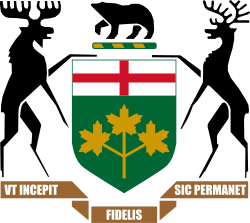This article has multiple issues. Please help improve it or discuss these issues on the talk page . (Learn how and when to remove these messages)
|

| Disability |
|---|
The Ontario Disability Support Program (ODSP) [1] is a means-tested government-funded last resort income support paid for qualifying residents in the province of Ontario, Canada, who are at least eighteen years of age and have a disability. [2] ODSP and Ontario Works (OW) [3] are the two main components of Ontario's social assistance system. Like most social programs in Canada, the program is funded by the government of the province. The Ministry of Community and Social Services is responsible for ODSP and OW. [4]
Contents
This is unlike Social Security Disability in the United States which is a federally funded program under the umbrella of an Old Age Pension but provides similar benefits — regardless of the state of residence.
The ODSP is defined by provincial legislation, the ODSP Act, and its supporting regulations. [5] It is managed through policy directives. [6]
Unlike Ontario Works, ODSP does not require recipients to undertake employment-related activities like job searching, or vocational training. This is determined through a subjective evaluation of four criteria [2] that are defined within the ODSP Act: [5]
- The disability is continuous or recurrent;
- It is expected to last for a year or more;
- The disability significantly limits their ability to work, look after themselves, or get out in the community; and
- It has been verified by an approved health professional.
For recipients wishing to work, an optional component provides employment support funding, such as referral to a specialized employment counsellor. [7]
ODSP is meant to replace the income lost due to the recipient's disability making them unable to work enough to gain self-sufficiency and thus has a higher rate of assistance and asset limits than Ontario Works does.